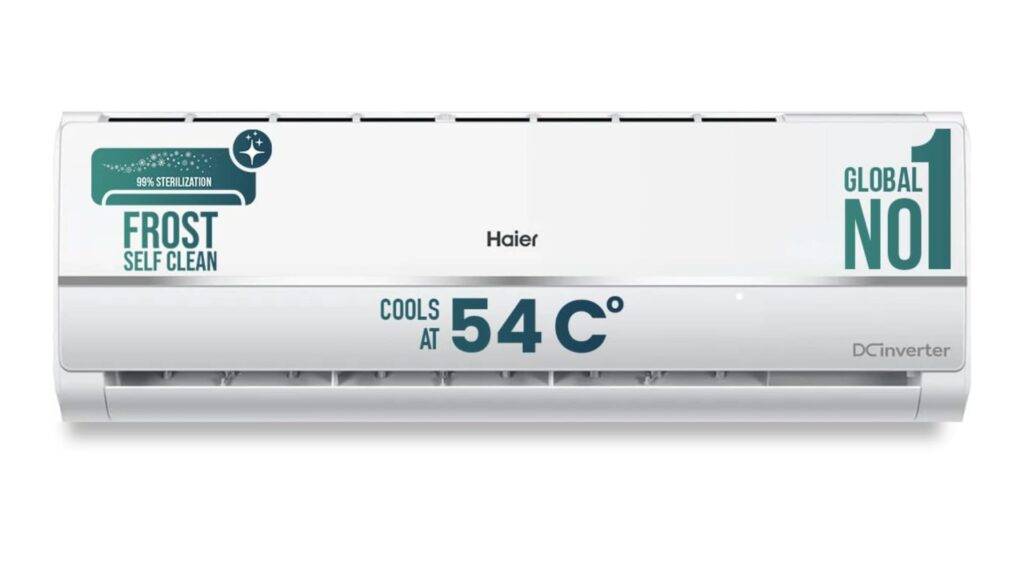In a groundbreaking move to combat energy wastage, reduce soaring power bills, and promote uniformity in appliance usage, the Government of India is set to standardize air conditioner temperature settings between 20°C and 28°C across all residential, commercial, and vehicular sectors. This move, spearheaded by Union Housing and Urban Affairs Minister Manohar Lal Khattar, comes at a time when electricity demand is peaking and extreme weather conditions are the new norm.
Table of contents
- The Need for Regulating AC Temperature Settings
- Key Objectives of the 20°C–28°C Temperature Cap
- Impact Across Sectors: Homes, Offices, and Vehicles
- Understanding the Existing Default and Revised Guidelines
- Consultation with Stakeholders Underway
- Why the Change Matters: Environmental and Economic Gains
- How the Policy Will Be Enforced
- What Consumers Should Expect
- Challenges & Road Ahead
- How This Move Aligns with Global Trends
- Conclusion: Standardized Cooling for a Sustainable Future
The Need for Regulating AC Temperature Settings
India’s electricity consumption hit an all-time high of 241 GW in June 2025, largely due to unprecedented heat waves and widespread AC usage. Most air conditioners today allow settings as low as 16°C, which not only burdens power grids but also inflates consumer electricity bills. Regulating this to a 20°C–28°C range is not just a power-saving tactic—it’s a national energy efficiency strategy.

Key Objectives of the 20°C–28°C Temperature Cap
- Reduce Peak Load Demand: Excessively low AC temperatures place enormous strain on power infrastructure during summer.
- Enhance Energy Efficiency: A minor increase in temperature settings results in significant energy savings.
- Lower Electricity Bills: Consumers can expect 10%–20% reductions in power usage with regulated settings.
- Promote Sustainable Cooling Practices: Helps align with India’s National Cooling Action Plan (NCAP) to reduce climate impact.
Impact Across Sectors: Homes, Offices, and Vehicles
The regulation is comprehensive—it targets all air conditioning units in:
- Private Homes
- Office Buildings
- Retail Spaces
- Automobiles (Passenger Cars and Commercial Vehicles)
By removing the option to set ACs below 20°C, the government aims to inculcate responsible cooling behavior in everyday usage—without compromising comfort.
Understanding the Existing Default and Revised Guidelines
As per the 2020 Bureau of Energy Efficiency (BEE) mandate, the default AC setting was 24°C. However, this was only applicable to star-labelled appliances, and users could still manually lower the temperature. The new rule will override such flexibility, thereby making the 20°C–28°C range a fixed operating boundary.
Commercial buildings were already encouraged to stay within 24°C–25°C to optimize HVAC operations. Now, the same approach is being standardized across all domains.
Consultation with Stakeholders Underway
To ensure a smooth rollout, the government is actively consulting:
- Air Conditioner Manufacturers
- Automobile Industry Stakeholders
- HVAC Experts
- Urban Infrastructure Developers
This inclusive process aims to align manufacturing norms and consumer education with the upcoming policy shift.
Why the Change Matters: Environmental and Economic Gains
1. Reducing Carbon Footprint
Running an AC at 18°C vs 24°C can increase energy consumption by nearly 30%. With millions of ACs in India, the cumulative energy saving is massive and directly translates to lower carbon emissions.
2. Stabilizing the Power Grid
India’s power grid faces heavy volatility during summers. By flattening the energy demand curve, this move ensures fewer blackouts and enhanced power availability for essential sectors.
3. Slashing Household Energy Costs
An average Indian household can save ₹300–₹800 per month on electricity just by maintaining AC settings within the proposed range. Multiplied across urban India, this is a multi-crore economic relief.
4. Promoting Healthier Indoor Environments
Extremely low temperatures inside, compared to sweltering heat outside, lead to respiratory stress, fatigue, and sinus issues. Setting ACs at 22°C–26°C is scientifically proven to offer comfort without health drawbacks.
How the Policy Will Be Enforced
Once finalized, the rule will be:
- Mandated through BIS standards for appliance manufacturers
- Embedded into firmware/software controls in future AC models
- Required in public sector buildings first, then extended to private
- Included in automobile HVAC system designs
Manufacturers will also be required to display compliance labels, and default settings will be locked between 20°C–28°C with limited override.
What Consumers Should Expect
- Firmware updates for smart ACs to align with the new limits
- Clear labeling of compliance range during new AC purchases
- Public awareness campaigns on benefits and usage tips
- Gradual phasing out of sub-20°C temperature options
Challenges & Road Ahead
Like any large-scale shift, challenges remain:
- Retrofitting older ACs might be difficult
- Public resistance due to perceived loss of control over comfort
- Initial cost hikes in manufacturing ACs with embedded restrictions
However, these challenges are short-term. With rising global energy prices and climate emergencies, this step positions India as a leader in sustainable cooling technology.
How This Move Aligns with Global Trends
Countries like Japan, Australia, and parts of Europe have already adopted similar climate-conscious temperature limits for indoor environments. India’s decision comes at a critical time when global climate goals demand drastic reductions in energy-related emissions.
This initiative also supports India’s commitment under the Paris Agreement and strengthens the country’s push toward Net Zero by 2070.
Conclusion: Standardized Cooling for a Sustainable Future
The proposed AC temperature cap is not just a policy—it’s a vision for responsible energy usage. By limiting AC settings between 20°C–28°C, India is setting a global example of balancing comfort, cost, and climate responsibility.
Whether you’re a homeowner, office administrator, or vehicle owner, adopting these guidelines will benefit not only your electricity bill but also the environment. It’s a small change with massive long-term impact.
